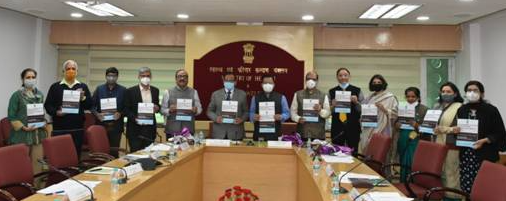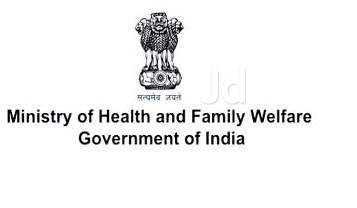
Dr. Vinod Kumar Paul, Member (Health), NITI Aayog and Shri Rajesh Bhushan,Secretary, Union Ministry of Health and FamilyWelfare, Government of India, released the Factsheets of key indicators onpopulation, reproductive and child health, family welfare, nutrition and others forIndia and 14 States/UTs (clubbed under Phase-II) of the 2019-21 National Family Health Survey (NFHS-5) here today.
The States and UTs which were surveyed in the Phase-II are Arunachal Pradesh, Chandigarh, Chhattisgarh, Haryana, Jharkhand, Madhya Pradesh, NCT of Delhi, Odisha, Puducherry, Punjab, Rajasthan, Tamil Nadu, Uttar Pradesh andUttarakhand. The findings of NFHS-5 in respect of 22 States & UTs covered in Phase-I were released in December, 2020.
The main objective of successive rounds of the NFHS is to provide reliableand comparable data relating to health and family welfare and other emerging issues. The NFHS-5 survey work has been conducted in around 6.1 lakh samplehouseholds from 707 districts (as on March, 2017) of the country; covering724,115 women and 101,839 men to provide disaggregated estimates up to districtlevel. All the results of NFHS-5 are available in the public domain on the Ministry website (www.mohfw.gov.in).
The all-India and State/UT level factsheet released includes information on 131 key indicators. It provides information on important indicators which arehelpful in tracking the progress of Sustainable Development Goals (SDGs) in thecountry. NFHS-4 (2015-16) estimates were used as baseline values for a largenumber of SDG indicators. Many indicators of NFHS-5 are similar to NFHS-4carried out in 2015-16 to make possible comparisons over time. However, NFHS-5 includes some new focal areas, such as death registration, pre-school education,expanded domains of child immunization, components of micro-nutrients tochildren, menstrual hygiene, frequency of alcohol and tobacco use, additional components of non-communicable diseases (NCDs), expanded age ranges formeasuring hypertension and diabetes among all aged 15 years and above, whichwill give requisite input for strengthening existing programmes and evolving new strategies for policy intervention.
The key results from India and Phase-II States/UTs NFHS-5 Factsheets areas below:
• The Total Fertility Rates (TFR), an average number of children per womenhas further declined from 2.2 to 2.0 at the national level and all 14States/UT’s ranging from 1.4 in Chandigarh to 2.4 in Uttar Pradesh. All Phase-II States have achieved replacement level of fertility (2.1) exceptMadhya Pradesh, Rajasthan, Jharkhand and Uttar Pradesh.
• Overall Contraceptive Prevalence Rate (CPR) has increased substantially from 54% to 67% at all-India level and in almost all Phase-II States/UTswith an exception of Punjab. Use of modern methods of contraceptives hasalso increased in almost all States/UTs.
• Unmet needs of family Planning have witnessed a significant decline from13 per cent to 9 per cent at all-India level and in most of the Phase-II States/UTs. The unmet need for spacing which remained a major issue inIndia in the past has come down to less than 10 per cent in all the States except Jharkhand (12%), Arunachal Pradesh (13%) and Uttar Pradesh(13%).
• Full immunization drive among children aged 12-23 months has recorded substantial improvement from 62 per cent to 76 per cent at all-India level.11out of 14 States/UTs has more than three-fourth of children aged 12-23 months with fully immunization and it is highest (90%) for Odisha.
On comparing NFHS-4 and NFHS-5 data, the increase in full immunization coverage is observed to be expeditious in many states and UTs; More than50 per cent of Phase-II States/ UTs are sharing over 10 percentage pointsduring the short span of 4 years. This can be attributed to the flagship initiative of Mission Indradhanush launched by the government since 2015.
• There is an increase from 51 per cent to 58 per cent of women receiving therecommended four or more ANC visits byhealth providers at all-India level.
Also, all the Phase-II States/UTs have show nimprovement except Punjab between 2015-16 to2019-20.
• Institutional births have increased substantially from 79 per cent to 89 percent at all-India Level. Institutional delivery is 100 per cent in Puducherryand Tamil Nadu and more than 90 per cent in 7 States/UTs out of 12 PhaseII States/UTs.
• Along with an increase in institutional births, there has also been asubstantial increase in C-section deliveries in many States/UTs especially inprivate health facilities.
";

.jpg)